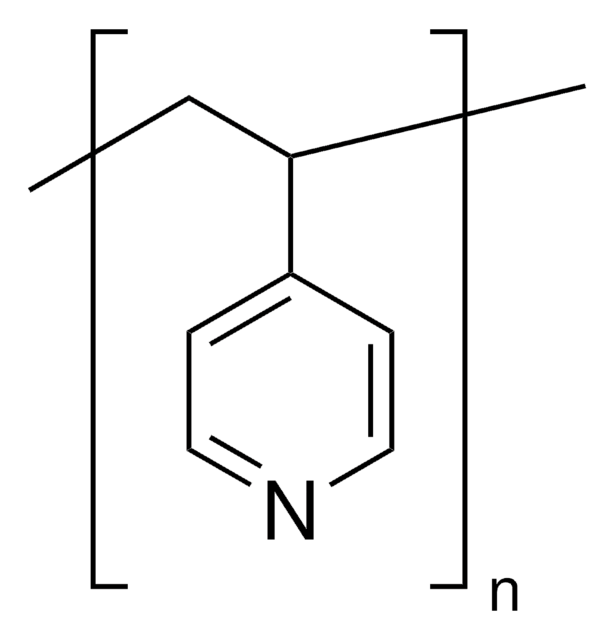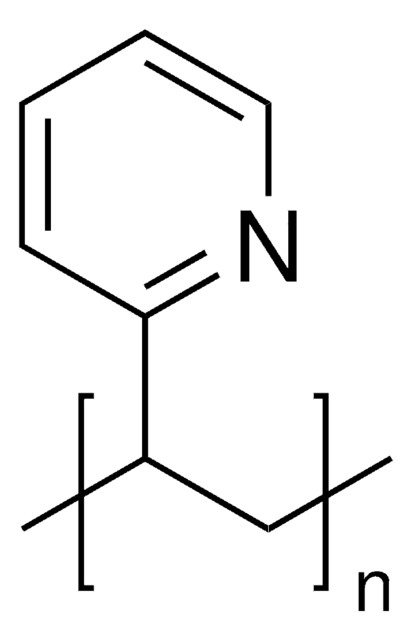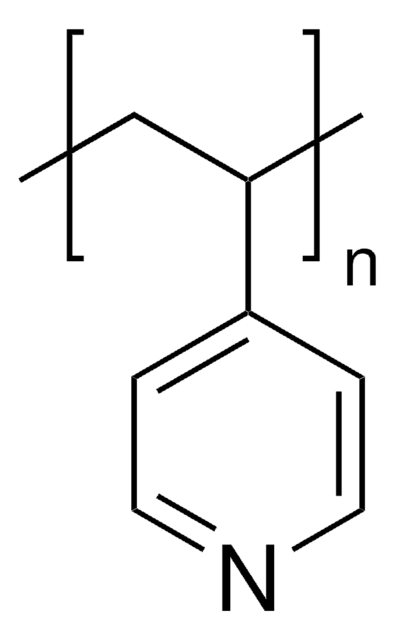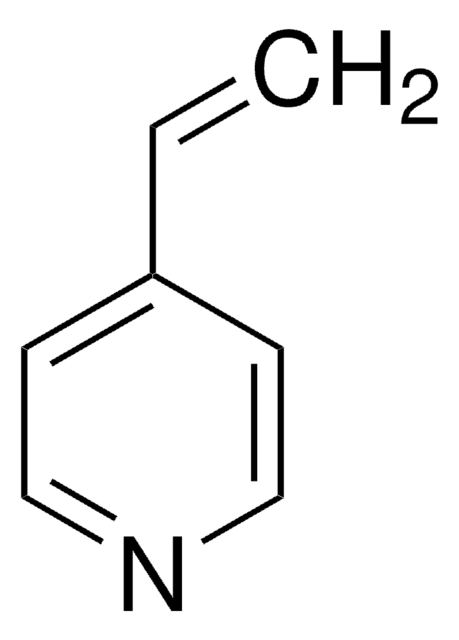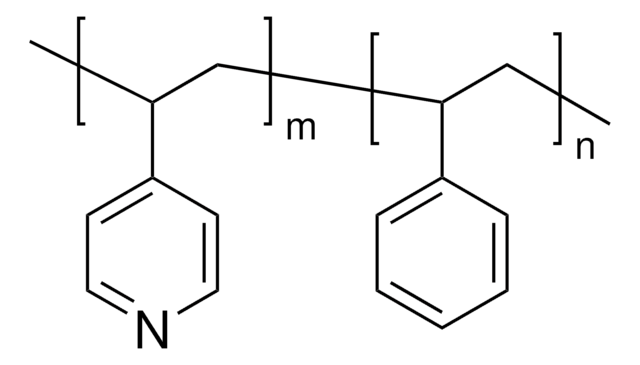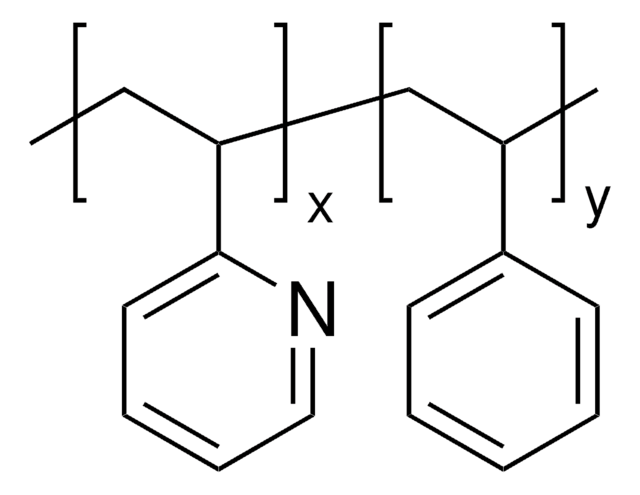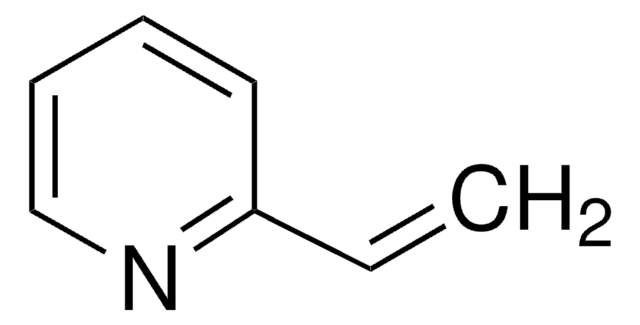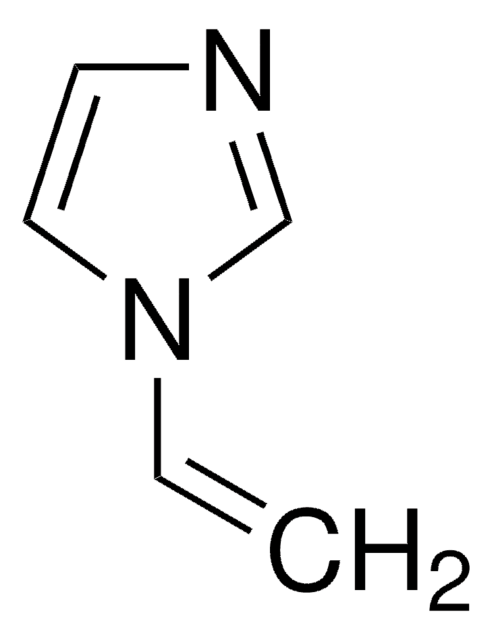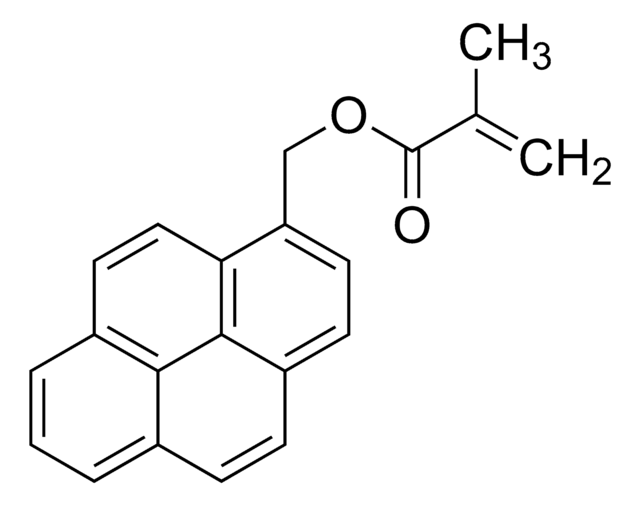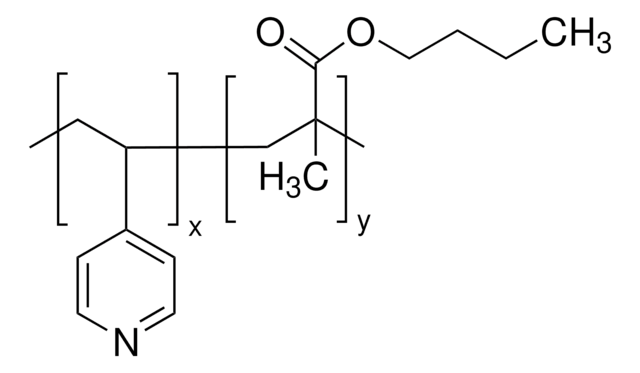523321
Poly(2-vinylpyridine)
analytical standard, average Mw 37,500 (Typical), average Mn 35,000 (Typical)
About This Item
Productos recomendados
grado
analytical standard
Nivel de calidad
mol peso
average Mn 35,000 (Typical)
average Mw 37,500 (Typical)
técnicas
gel permeation chromatography (GPC): suitable
formato
neat
InChI
1S/C7H7N/c1-2-7-5-3-4-6-8-7/h2-6H,1H2
Clave InChI
KGIGUEBEKRSTEW-UHFFFAOYSA-N
¿Está buscando productos similares? Visita Guía de comparación de productos
Categorías relacionadas
Aplicación
- Synthesis and Structural Insight into Poly(dimethylsiloxane)-b-Poly(2-vinylpyridine) Copolymers: This study delves into the synthesis of poly(dimethylsiloxane)-b-poly(2-vinylpyridine) copolymers, highlighting their structural characteristics and potential applications in creating hybrid materials with unique properties (Avgeropoulos et al., 2023).
- pH Tunable Patterning of Quantum Dots: Research discusses the utilization of poly(2-vinylpyridine) in pH-sensitive patterning for quantum dot arrays, offering a versatile approach for developing advanced photonic devices (Onses et al., 2024).
- Dynamic Photonic Janus Colloids with Axially Stacked Structural Layers: The study presents the application of poly(2-vinylpyridine) in the formation of dynamic photonic Janus colloids, which could lead to innovative solutions in sensor technologies and display systems (Ku et al., 2024).
- Polyhedral Colloidal Clusters Assembled from Amphiphilic Nanoparticles in Deformable Droplets: Demonstrates the role of poly(2-vinylpyridine) in assembling complex colloidal structures, which may be crucial for the development of novel biomaterials and drug delivery systems (Jiang et al., 2023).
Palabra de señalización
Warning
Frases de peligro
Consejos de prudencia
Clasificaciones de peligro
Eye Irrit. 2 - Skin Irrit. 2 - STOT SE 3
Órganos de actuación
Respiratory system
Código de clase de almacenamiento
11 - Combustible Solids
Clase de riesgo para el agua (WGK)
WGK 3
Punto de inflamabilidad (°F)
Not applicable
Punto de inflamabilidad (°C)
Not applicable
Equipo de protección personal
dust mask type N95 (US), Eyeshields, Gloves
Elija entre una de las versiones más recientes:
¿Ya tiene este producto?
Encuentre la documentación para los productos que ha comprado recientemente en la Biblioteca de documentos.
Los clientes también vieron
Nuestro equipo de científicos tiene experiencia en todas las áreas de investigación: Ciencias de la vida, Ciencia de los materiales, Síntesis química, Cromatografía, Analítica y muchas otras.
Póngase en contacto con el Servicio técnico